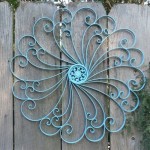Silk Flowers For Cake Decorating: A Comprehensive Guide
Silk flowers have emerged as a popular choice for cake decorators seeking versatile, durable, and aesthetically pleasing embellishments. Beyond traditional buttercream and fondant decorations, silk flowers offer a unique texture, color palette, and level of detail that can elevate cake designs to new heights. This article explores the various aspects of using silk flowers for cake decorating, including their benefits, selection process, preparation techniques, arrangement strategies, safety considerations, and maintenance practices.
Benefits of Using Silk Flowers in Cake Decorating
The appeal of silk flowers in cake decorating stems from a multitude of advantages they offer compared to fresh flowers or other edible decorations. Firstly, silk flowers provide enhanced durability and longevity. Unlike fresh flowers, which wilt relatively quickly, silk flowers maintain their appearance for extended periods, making them ideal for cakes that need to be displayed for several hours or even days. This durability also allows for intricate and elaborate designs without the worry of the decorations deteriorating before the event.
Secondly, silk flowers offer a wider range of color and style options. They are available in virtually every hue imaginable, including shades that are difficult or impossible to find in fresh flowers. This expanded color palette allows cake decorators to perfectly match the theme or desired aesthetic for any occasion. Furthermore, silk flowers are manufactured in a diverse array of styles, from realistic replicas of existing flowers to more stylized and abstract designs, providing decorators with unparalleled creative freedom.
Thirdly, silk flowers are reusable and cost-effective. While the initial investment in silk flowers may be higher than that of fresh flowers, their reusability makes them a more economical choice in the long run. After the cake has been enjoyed, the silk flowers can be carefully removed, cleaned, and stored for future use. This reusability reduces waste and allows decorators to build a collection of decorations that can be adapted to various cake designs, which can save money on materials in the long run.
Fourthly, silk flowers eliminate the risk of pesticide contamination often associated with fresh flowers. Fresh flowers, frequently treated with pesticides, can pose a potential health hazard when placed directly on cakes. Using silk flowers mitigates this risk, ensuring that the cake remains safe for consumption. This is particularly important for cakes designed for children or individuals with sensitivities. This promotes the food safety regulations and is increasingly important to follow when preparing items for consumption.
Fifth, silk flowers provide a hypoallergenic alternative to fresh flowers. Allergies to pollen and other floral components are common. Using silk flowers avoids the potential allergic reactions associated with fresh flowers, making them a safer option for individuals with sensitivities. This broadens the appeal of decorated cakes and ensures that everyone can enjoy them without discomfort.
Selecting the Right Silk Flowers for Cake Decoration
Choosing the appropriate silk flowers is crucial for achieving the desired aesthetic and ensuring the safety of the decorated cake. Several factors should be considered during the selection process, including material, size, color, style, and stem construction.
The material of the silk flower plays a significant role in its appearance and durability. Silk flowers are typically made from polyester, rayon, or a blend of synthetic fibers. High-quality silk flowers are crafted from materials that closely mimic the texture and appearance of real flowers. Polyester flowers are durable and resistant to fading but may lack the delicate look of rayon. Rayon flowers, while more realistic, can be more susceptible to damage and require careful handling. A blend of polyester and rayon offers a balance of durability and aesthetic appeal.
The size of the silk flowers should be proportionate to the size of the cake and the overall design. Overly large flowers can overwhelm a small cake, while too-small flowers can get lost in a larger design. Consider the scale of the cake tiers and the surrounding decorations when selecting flower sizes. Utilizing a variety of sizes provides a more dynamic and visually attractive arrangement.
The color of the silk flowers should complement the cake's frosting, filling, and overall theme. Consider the event for which the cake is being decorated. For example, pastel shades are often preferred for weddings, while brighter colors may be more appropriate for birthday parties. Use a color wheel to understand color harmonies and ensure that the floral arrangements complement each other and the cake's other decorations. Contrast is also an important element; a pop of contrasting color can add visual interest to the cake.
The style of the silk flowers should align with the desired aesthetic. Do you looking for a romantic, rustic, modern, or whimsical theme? Different styles of flowers will contribute to different styles. Realistic silk flowers provide a classic and elegant look, while more stylized or abstract flowers can add a contemporary or artistic touch. Consider the event and the preferences of the recipient when choosing the style of the silk flowers.
The stem construction of the silk flowers is an important factor to consider for safety and ease of use. Opt for flowers with stems that can be easily cut or shaped to fit the desired arrangement. Stems should be sturdy enough to support the weight of the flower but also pliable enough to be manipulated. Stems that are wrapped in floral tape or coated in a food-safe sealant are preferable, as they prevent any potential contamination of the cake.
Preparing Silk Flowers for Cake Use
Before silk flowers can be placed on a cake, they must be properly cleaned and prepared to ensure food safety and optimal presentation. This process involves several steps, including cleaning, sealing, and stem modification.
Cleaning the silk flowers is essential to remove any dust, debris, or manufacturing residues. Gently wipe the flowers with a clean, damp cloth or use a soft brush to remove any visible particles. For more stubborn stains, a mild soap solution can be used. Ensure that all traces of soap are thoroughly rinsed off, and allow the flowers to air dry completely before proceeding to the next step.
Sealing the cut ends of the stems prevents any potential leaching of dyes or materials into the cake. Apply a food-safe sealant, such as melted chocolate or edible glue, to the cut ends of the stems. This creates a barrier that prevents any harmful substances from coming into contact with the cake. Allow the sealant to dry completely before inserting the stems into the cake.
Modifying the stems may be necessary to achieve the desired arrangement and ensure that the flowers are securely positioned on the cake. Cut the stems to the appropriate length using wire cutters or strong scissors. Be sure to leave enough stem length to anchor the flowers firmly into the cake or floral foam. If the stems are too thick or rigid, they can be carefully bent or shaped using pliers.
Consider using floral tape to wrap the stems for added stability and to create a more cohesive look. Floral tape is a self-adhesive tape that can be used to bind multiple stems together or to create a thicker, more supportive base for the flowers. Wrap the stems tightly with floral tape, ensuring that the tape is securely attached and that there are no gaps or exposed areas.
In some cases, it may be necessary to use floral foam or other supportive materials to create the desired arrangement. Floral foam can be cut to fit the shape of the cake and used as a base for inserting the flower stems. This provides a stable and secure platform for the floral arrangement and allows for more complex and intricate designs. Ensure that the floral foam is securely attached to the cake using edible glue or other food-safe adhesives.
Arranging Silk Flowers on Cakes: Techniques and Tips
Arranging silk flowers on cakes requires careful planning, attention to detail, and an understanding of design principles. Consider the overall style of the cake, the event for which it is being decorated, and the preferences of the recipient when creating the floral arrangement.
Start by planning the placement of the flowers. Before inserting any stems into the cake, experiment with different arrangements and compositions. Consider the balance, symmetry, and flow of the design. Use a sketch or photograph of the cake as a guide and mark the areas where you plan to place the flowers.
Begin with the larger flowers. These will serve as the focal points of the arrangement and create a sense of structure and balance. Position the larger flowers first, ensuring that they are evenly spaced and that they complement the shape and size of the cake. Use floral foam or other supportive materials to secure the larger flowers in place.
Fill in the gaps with smaller flowers and foliage. These will add texture, depth, and visual interest to the arrangement. Use a variety of sizes, shapes, and colors to create a dynamic and eye-catching display. Position the smaller flowers and foliage around the larger flowers, filling in any gaps or empty spaces.
Consider using cascading arrangements. Cascading arrangements create a dramatic and elegant look, particularly for wedding cakes or other special occasions. To create a cascading arrangement, start by positioning the larger flowers at the top of the cake and gradually reducing the size of the flowers as you move downward. Allow the flowers to cascade down the sides of the cake, creating a sense of movement and flow.
Use a variety of techniques to secure the flowers in place. In addition to floral foam and floral tape, you can also use edible glue or melted chocolate to attach the flowers to the cake. Apply a small amount of edible glue or melted chocolate to the back of each flower and press it firmly against the cake. Hold the flower in place for a few seconds to allow the adhesive to set.
Maintaining the Appearance of Silks Flowers on Cakes
Even though silk flowers are durable, they must be maintained to preserve their appearance and functionality. Simple steps to follow include cleaning and proper storage of silk flowers for reuse.
After the event, detach the silk flowers from the cake with care. Remove any remaining frosting, buttercream, or other cake debris from the flowers' surface. Use a gentle brush or a damp cloth to make sure that the flowers are free of any residue.
After cleaning them, store the flowers in a cool, dry location. This is to protect them from direct sunlight, moisture, and dust. These are the factors that might degrade their texture and color. Enclose them in a box or container to prevent dust from collecting.

Pros And Cons Of Decorating A Wedding Cake With Real Artificial Fl Woodflowers Com

What Type Of Flowers For My Cake Quality Company

White Rose Flower Cake Flowers Artificial Silk For Christening Wedding Anniversary Birthday Claire De Fleurs

Decorate Your Wedding Cake With Silk Flowers Flower

Fl Cake Topper Blush Wedding Silk Flower Flowers

Bulk Artificial Flowers Combo Box Set Fake Faux Cake With Stems For Diy Wedding Bouquets Centerpieces Baby Shower Party Whole

12 Awesome Artificial Flowers For Cake Decoration Silk

Choosing Real Silk Or Sugar Flowers For Your Cake Cheers And Confetti Blog By Eventective

Cake Flowers Custom Made Fl Toppers Melbourne

Incredible Silk Flower Diy Wedding Cake








